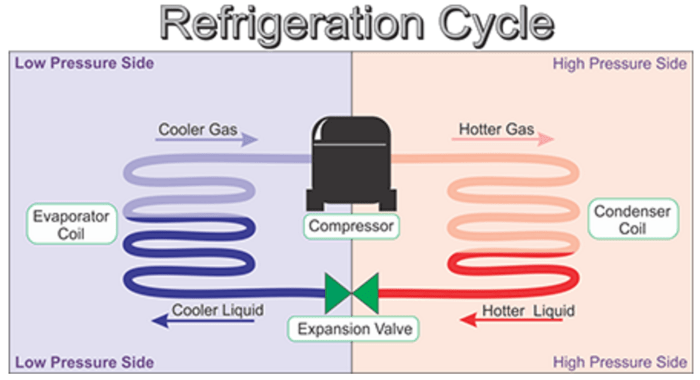High superheat high subcooling TXV systems play a crucial role in maintaining optimal performance and efficiency in HVAC systems. This comprehensive guide delves into the intricacies of TXV operation, providing valuable insights into system components, optimization techniques, troubleshooting, and design considerations.
By understanding the interplay between high superheat, high subcooling, and TXV performance, HVAC professionals can enhance system efficiency, reduce energy consumption, and ensure reliable operation.
System Components: High Superheat High Subcooling Txv
In HVAC systems, the thermostatic expansion valve (TXV) plays a crucial role in regulating the flow of refrigerant. By maintaining high superheat and high subcooling, the TXV ensures optimal system performance and efficiency.
High superheat refers to the temperature difference between the refrigerant at the outlet of the evaporator and the saturation temperature at the evaporator outlet pressure. High subcooling refers to the temperature difference between the refrigerant at the inlet of the condenser and the saturation temperature at the condenser inlet pressure.
The TXV adjusts the flow of refrigerant to maintain the desired superheat and subcooling. This ensures that the evaporator is fully flooded with liquid refrigerant, providing maximum heat transfer, and that the condenser is fully condensed, minimizing pressure drop and maximizing heat rejection.
Impact of TXV on Refrigerant Flow and System Efficiency
- Optimizes refrigerant flow:The TXV modulates the refrigerant flow to match the cooling load, ensuring efficient operation under varying conditions.
- Reduces pressure drop:High subcooling reduces the pressure drop across the condenser, improving system efficiency.
- Enhances heat transfer:High superheat ensures proper flooding of the evaporator, maximizing heat transfer and cooling capacity.
Optimization Techniques

Optimizing TXV settings to achieve high superheat and high subcooling is essential for maximizing system performance. Here are some guidelines:
- Monitor superheat and subcooling:Use pressure gauges and temperature sensors to monitor the superheat and subcooling at the evaporator outlet and condenser inlet, respectively.
- Adjust TXV setting:Based on the monitored values, adjust the TXV setting to achieve the desired superheat and subcooling.
- Consider refrigerant charge:The refrigerant charge can impact TXV operation. Adjust the charge to ensure optimal flow and system efficiency.
Troubleshooting and Maintenance

Issues with high superheat and high subcooling in TXV systems can arise due to various factors. Here are some common issues and troubleshooting steps:
Low refrigerant charge
Symptoms: Excessive superheat, insufficient subcooling.
Solution: Check and adjust the refrigerant charge as per the manufacturer’s specifications.
TXV malfunction
Symptoms: Inconsistent superheat and subcooling, system inefficiency.
Solution: Inspect the TXV for any damage or blockages. Replace if necessary.
Fouling or icing of evaporator or condenser
Symptoms: Reduced heat transfer, abnormal superheat or subcooling.
Solution: Clean or defrost the evaporator or condenser as required.
System Design Considerations

System design plays a significant role in TXV performance and efficiency. Here are some considerations:
TXV selection and sizing
Select and size the TXV based on the system capacity and refrigerant type. Proper sizing ensures optimal flow and system performance.
Evaporator and condenser design
The design of the evaporator and condenser impacts the refrigerant flow and heat transfer. Optimize the design to minimize pressure drop and maximize heat transfer.
System components, High superheat high subcooling txv
Other system components, such as piping, filters, and accumulators, can influence TXV operation. Ensure proper design and installation to avoid system issues.
Essential Questionnaire
What is the role of a TXV in an HVAC system?
A thermostatic expansion valve (TXV) regulates the flow of refrigerant in an HVAC system, ensuring optimal cooling and heating performance.
How does high superheat and high subcooling affect TXV operation?
High superheat and high subcooling are key parameters that influence the performance of a TXV. Optimizing these parameters can improve system efficiency and reduce energy consumption.
What are some common issues associated with high superheat and high subcooling in TXV systems?
Common issues include refrigerant leaks, improper charge levels, and faulty TXV operation. These issues can lead to reduced system efficiency and potential damage to equipment.